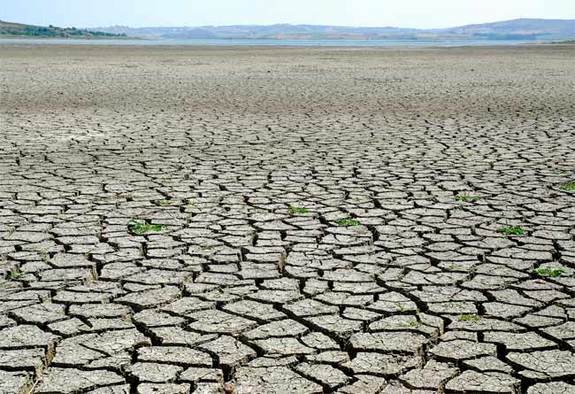Century of Drought May Be Ahead

Western forests could be facing a 100-year drought, turning to scrubland by the end of the century – and taking their ability to soak up carbon with them, according to a new study.
The new research, published in Nature Geoscience July 29, suggests the western evergreen forests, which cover an area from southern Canada to northern Mexico, took up a lot less carbon from the atmosphere during the drought that lasted from 2000-2004. That's normal, and expected. The question is what happens after that.
Christopher Schwalm and his colleagues at Northern Arizona University's School of Earth Science and Environmental Sustainability think that there is a good chance the drought could be the new normal. If that happens, a big carbon sink will be lost.
Drought of 2000
The group calculated that during the drought of 2000-2004, the amount of carbon the western forests took up dropped by between 30 million and 298 million metric tons per year. Ordinarily they would take up between 177 million and 623 million metric tons. By comparison, a 2011 study from the U.S. Forest Service estimated the global sink from forests is between 2 billion and 2.8 billion metric tons per year. [Images Reveal Forests' True Colors]
There's a lot of uncertainty in those measurements, but even assuming the smallest loss and the highest carbon uptake — which is unlikely — it still means a non-trivial dent in the amount of CO2 removed from the atmosphere.
A lengthy drought will cause a big dieback of the evergreen forests that are familiar to hikers and skiers, bringing in vegetation that will likely more resemble a desert scrubland. Those kinds of plants take up carbon, but not as well as forests do.
Get the world’s most fascinating discoveries delivered straight to your inbox.
Climate change is the likely culprit for such a long drought, or "megadrought" that lasts decades, say the researchers. As the climate warms, many areas that were dry become drier, and some that were wet become wetter. Not only have the last three decades contained some of the hottest years on record, the amount of rainfall in western North America might drop – a lot.
The result is that where mountainous forests previously recovered from long drought events — such as the one in the 12th century that may have resulted in the abandonment of the ancient towns of the southwest — that might not happen again in the future. Or at least, not on a time scale that's helpful to humans. [The Worst Droughts in US History]
If people don't cut back emissions or mitigate the die-off somehow, the result will probably be an increase in the rate of carbon-dioxide accumulation in the atmosphere, leading to greater warming, Schwalm told LiveScience.
Schwalm and his team used several sources of data to get their estimates, such as Fluxnet, a network of sensors run by the Oak Ridge National Laboratory; the Center for Climatic Research at the University of Delaware; and the U.S. Department of Agriculture.
What's to come
The idea was to gather all of the best estimates for the carbon flux — the rate at which carbon enters and leaves the atmosphere — in the region in question. For example, the Department of Agriculture measures crop yields, and knowing that gives a good estimate of how much carbon (in the form of food) was sequestered by agricultural land. In the forests, the Fluxnet sensor towers measure carbon dioxide in the atmosphere in a forest, which can then be compared with other locations.
The study also looked at the severe the turn-of-the-century drought using the "Palmer Drought Severity Index," which measures precipitation, runoff and other factors. Taking a five-year average, and using indicators such as tree-ring data, Schwalm found that this most recent drought of 2000-2004 was as bad as any since about the year 1200.
That doesn't bode well; there is a real possibility given current trends that this drought could be one of those that lasts decades, or even a century, he said.
Even that wouldn't be so bad for the forest, but he noted that it's important that the kind of forests that exist change after each of these drought cycles. The evergreen species we see now in the four corners region are probably different from those that were there 1,500 years ago.
There are several mitigation strategies, such as "industrial forestry" – using specially bred trees, for instance, to re-forest the areas where diebacks occur. And there will be some adaptation on the part of the plants. But there are limits in terms of how "plastic" or amenable to changing these plants will be. "A lot of species are a lot more plastic than we give them credit for," Schwalm said. "But at a certain point the plasticity fails."
Follow LiveScience on Twitter @livescience. We're also on Facebook & Google+.

